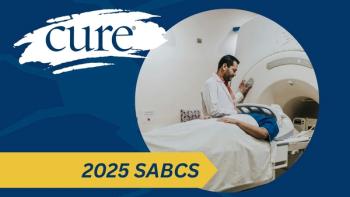
Understanding How GIST Is Diagnosed and What Patients Should Know
Dr. Weijing Sun discussed how GIST is typically diagnosed, as well as what tests are commonly used to confirm the diagnosis.
Gastrointestinal stromal tumors (GIST) are typically diagnosed through a combination of symptom awareness and specialized tests, according to Dr. Weijing Sun, who says that it is incredibly important that patients stay attuned to their own body and its needs.
Moreover, one common procedure that Sun notes is endoscopic ultrasound, which is inserted through the mouth to visually examine the stomach and esophagus. Another procedure is a CT scan, which provide detailed imaging to help identify tumors.
Sun is the Sprint Professor of Medical Oncology, as well as a professor of Medical Oncology and Cancer Biology, and the director of Medical Oncology Division at the University of Kansas School of Medicine. He also serves as the associate director of the University of Kansas Cancer Center.
Transcript
How is GIST typically diagnosed, and what tests or imaging studies are commonly used to confirm the diagnosis?
So the first thing, is that you have to be attuned to your body and its symptoms, as well as the common tests available, because for most diseases in the gastrointestinal system, there are several things we can do. The common procedure we perform is called an endoscopic ultrasound (EUS). This involves inserting an endoscope, which has an ultrasound on its tip, through your mouth to examine your stomach and sometimes your esophagus. This allows the doctor to visually inspect your stomach.
Another commonly used test is a CT or CAT scan. This is a more precise X-ray technique, using a computer to create detailed images. These are considered imaging tests. These two are the common tests we typically use when we clinically suspect GIST. If a patient presents with bleeding symptoms, a colonoscopy can be performed, which is useful for diagnosing issues in the rectum or large intestine. So, the primary tests available are endoscopy with ultrasound and CT scans.
For more news on cancer updates, research and education,





